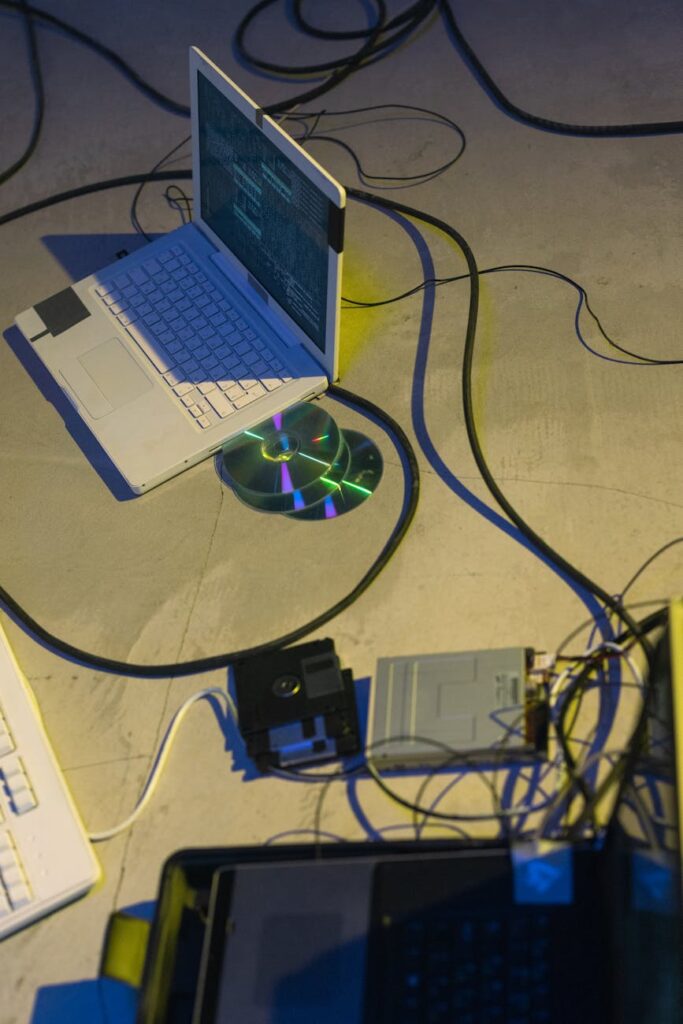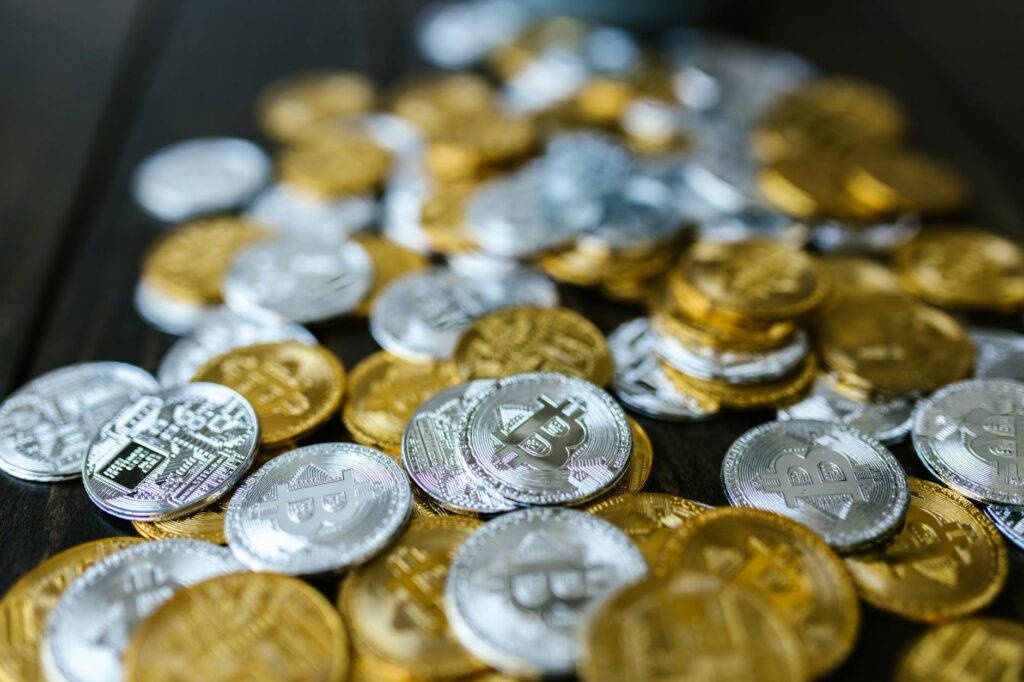You hear the phrase thrown around a lot lately, especially in financial news and on Twitter feeds: the weaponization of the dollar. It sounds dramatic, like something out of a spy thriller. But what does it actually mean? It’s not about physical dollars being used in conflict. It’s about something far more powerful: using the U.S. dollar’s global dominance as a tool of foreign policy. And this strategy, while effective for some goals, is having an unexpected and massive side effect—it’s pushing countries, companies, and individuals straight into the arms of cryptocurrency.
For decades, the world has run on the dollar. It’s the king. The global reserve currency. If you want to buy oil, trade goods, or move large sums of money across borders, you’re almost certainly doing it in dollars through systems that the U.S. has significant influence over. This gives the United States incredible leverage. With the flip of a switch, it can cut entire nations off from the global financial system, freeze assets, and impose crippling sanctions. It’s a powerful economic weapon. But when you use a weapon too often, your opponents start looking for a shield. And for a growing number of people, that shield looks a lot like Bitcoin, Ethereum, and the decentralized world of crypto.
Key Takeaways:
- The ‘weaponization of the dollar’ refers to using U.S. economic sanctions and control over the global financial system (like SWIFT) as foreign policy tools.
- This strategy forces sanctioned nations and others fearing similar treatment to actively seek alternatives to the dollar-denominated system.
- Cryptocurrencies offer a decentralized, censorship-resistant, and borderless alternative for transactions and storing value, making them an attractive ‘escape hatch’.
- While crypto adoption is growing due to these geopolitical pressures, it still faces major hurdles like volatility, regulation, and scalability.
- The long-term trend suggests a move towards a more multipolar financial world, where the dollar’s dominance is challenged by alternatives, including crypto and other digital currencies.
So, What Does “Weaponization of the Dollar” Actually Mean?
Before we dive into crypto’s role, we need to get a solid grip on this core concept. The dollar’s power isn’t an accident; it was cemented after World War II with the Bretton Woods Agreement, which established a new global economic order. Ever since, the U.S. dollar has been the world’s primary reserve currency. What does that mean in practice?
- Most global trade is priced in dollars. Think oil, wheat, microchips—you name it.
- Central banks hold massive dollar reserves. They do this to stabilize their own currencies and facilitate international trade.
- The plumbing of global finance runs through the U.S. Systems like SWIFT (Society for Worldwide Interbank Financial Telecommunication), while technically based in Belgium, are heavily influenced by the U.S. and are essential for most international bank transfers.
This setup gives the U.S. Treasury a unique and powerful toolkit. When another country acts in a way the U.S. government disapproves of, it doesn’t always have to resort to military action. It can use financial weapons.
The Arsenal of Economic Statecraft
The primary tools in this arsenal are sanctions and financial blockades. Here’s how they work:
- Asset Freezes: The U.S. can freeze the dollar-denominated assets of foreign governments, companies, or individuals held in banks around the world. We saw a massive example of this when billions of dollars belonging to Russia’s central bank were frozen following the invasion of Ukraine. Suddenly, that money was just gone. Poof.
- SWIFT Cut-off: This is the so-called ‘nuclear option’. By pressuring SWIFT to delist a country’s banks, the U.S. can effectively sever their connection to the global financial system. It makes sending or receiving money internationally nearly impossible. Iran and Russia have both faced this.
- Secondary Sanctions: This is where it gets really interesting. The U.S. can tell other countries, “If you do business with our target, we will sanction you.” This forces companies and nations worldwide to choose between trading with, say, Iran, or maintaining access to the entire U.S. financial system. It’s not much of a choice.

For a long time, this system was seen as an unassailable source of U.S. power. There was simply no alternative. If you wanted to participate in the global economy, you had to play by the dollar’s rules. But that’s changing. The more this power is used, the more incentive everyone else has to build a system where those rules don’t apply.
The Ripple Effect: How Sanctions Push Nations to Seek Alternatives
Imagine you’re playing a board game where one player also gets to be the banker and can change the rules or take your money away whenever they want. How long would you keep playing that game? You’d probably start trying to invent a new one with your friends. That’s exactly what’s happening on the world stage.
The frequent and broad application of sanctions has sent a clear message to the rest of the world: your access to your own money is not guaranteed. It is conditional. This realization has been a wake-up call, particularly for nations that don’t always see eye-to-eye with U.S. foreign policy.
Every nation, from ally to adversary, has watched the U.S. freeze central bank reserves and realized, ‘That could be us.’ This single act did more for de-dollarization and the search for alternatives than decades of academic debate.
Countries are now actively and openly working to reduce their dependence on the dollar. This is often called de-dollarization. We see it in several forms:
- Bilateral Trade Agreements: Countries like China, Russia, India, and Brazil are increasingly settling trade in their own currencies, bypassing the dollar entirely. The BRICS bloc is a major driver of this trend.
- Alternative Payment Systems: China has developed its Cross-Border Interbank Payment System (CIPS), and Russia has its System for Transfer of Financial Messages (SPFS). These are still small compared to SWIFT, but they are a clear attempt to build parallel financial plumbing.
- Diversifying Reserves: Central banks are slowly but surely reducing the percentage of U.S. dollars in their foreign reserves, opting instead for gold, euros, yuan, and other assets.
The problem with these solutions is that they are still centralized. They rely on trust between governments and are subject to their own political pressures. What if there was a system that didn’t require trust in any government at all? A system that was neutral, borderless, and couldn’t be controlled by a single entity?
Enter Cryptocurrency: The Decentralized Contender
This is where the crypto conversation gets really compelling. Bitcoin was born in 2009 out of the ashes of the 2008 financial crisis, a crisis that eroded trust in the traditional banking system. Its core innovation, the blockchain, created a way to transfer value peer-to-peer without needing a bank or government in the middle. It is, by its very design, a non-political form of money.
Compare its properties to the dollar-based system:
- Permissionless: To use Bitcoin, you don’t need to open an account or ask for permission. If you have an internet connection, you can participate. Your account can’t be frozen by a third party.
- Censorship-Resistant: A government can’t stop a Bitcoin transaction between two people in the way it can stop a bank transfer. The network is distributed globally, making it incredibly resilient to control.
- Borderless: Sending a million dollars in Bitcoin to someone on the other side of the world is just as easy as sending ten dollars to your neighbor. The network doesn’t care about artificial lines on a map.
- Seizure-Resistant: If a user properly secures their private keys, their funds cannot be seized without their consent. This is a profound shift from the traditional system where assets are held by custodians (banks) who must comply with government orders.

For a country, company, or individual facing financial isolation, these aren’t just cool tech features. They are a lifeline. They represent an escape hatch from a financial system that can be turned against them at any moment.
The Tangible Effects on Crypto Adoption
So, how is the weaponization of the dollar translating into real-world crypto adoption? It’s happening on multiple levels, from the ground up to the state level.
A Lifeline for Individuals and Businesses
In countries like Venezuela, Argentina, or Nigeria, where citizens face hyperinflation and strict capital controls, crypto has been a tool for preserving wealth for years. But sanctions add another layer. When a country is cut off from the global system, ordinary people and businesses suffer. They can’t receive payments from abroad, they can’t pay for imported goods, and their savings evaporate.
Crypto, particularly stablecoins (digital tokens pegged to the U.S. dollar, ironically) and Bitcoin, provide a way to circumvent these restrictions. A freelance developer in Iran can get paid for their work by a client in Europe using crypto. A small business in Russia can pay for supplies from a Chinese manufacturer. These aren’t hypothetical scenarios; they are happening every day. It’s a parallel economy, born out of necessity.
The Rise of State-Level Interest in Digital Assets
It’s not just individuals. Governments themselves are exploring digital assets. While many are hostile to decentralized cryptocurrencies like Bitcoin, they are very interested in the underlying technology and the idea of a financial system outside of U.S. control.
We’ve seen sanctioned nations like Iran use Bitcoin mining as a way to generate export revenue. By using their energy resources to mine Bitcoin, they can create a digital commodity that can be sold on the global market for hard currency, bypassing traditional financial channels. There have also been numerous reports of sanctioned states using crypto to facilitate international trade, though this is often hard to track definitively.
De-Dollarization and the Search for a New Reserve
This is the big one. Could Bitcoin or another digital asset eventually become a global reserve asset? It’s a controversial idea, but it’s no longer just a fantasy. When central banks saw Russia’s reserves frozen, they had to ask themselves: what is a truly ‘risk-free’ asset? U.S. Treasury bonds have long held that title, but they clearly come with political risk.
Gold has always been the traditional alternative, and we’ve seen central banks buying it up at a record pace. But gold is physical and difficult to move. Bitcoin offers the properties of a hard asset like gold (scarcity, durability) but with the portability of digital information. A central bank could, in theory, hold billions of dollars worth of Bitcoin and custody it themselves, making it immune to foreign seizure. We’re not there yet, but the conversation has started.

Challenges and Counterarguments
Of course, it’s not a simple story of ‘dollar bad, crypto good’. The path to crypto adoption is filled with massive obstacles.
- Volatility: Bitcoin and other cryptocurrencies are notoriously volatile. This makes them difficult to use for everyday trade or as a stable store of value for a nation’s treasury.
- Scalability: Blockchains like Bitcoin’s can only process a small number of transactions per second compared to a system like Visa. While solutions are being developed (like the Lightning Network), they are not yet ready for global scale.
- Regulatory Crackdown: Governments, including the U.S., are well aware of this trend. They are actively working to regulate crypto and shut down on-ramps and off-ramps (the exchanges that convert crypto to traditional currency) for illicit actors.
- CBDCs as the State’s Answer: The biggest counter-trend is the rise of Central Bank Digital Currencies (CBDCs). A digital dollar or digital yuan would offer the efficiency of digital transactions but with full government control. A CBDC is the antithesis of Bitcoin—it is a tool for surveillance and control, not freedom. Many nations may opt for this controlled evolution rather than embrace a decentralized future.
Conclusion
The weaponization of the dollar is a powerful geopolitical tool, but its overuse is creating a powerful backlash. By making access to the global financial system a privilege rather than a right, it has given the world a powerful incentive to build an alternative. Cryptocurrency, with its decentralized and censorship-resistant nature, is perfectly positioned to be that alternative.
This isn’t to say the dollar is going to disappear overnight. Its dominance is deeply entrenched. However, the trend is clear. We are moving from a unipolar financial world, centered entirely on the U.S. dollar, to a more multipolar one. In this new world, regional currencies, commodities like gold, and, increasingly, decentralized digital assets like Bitcoin will all play a role. The very actions taken to preserve the dollar’s power may be the catalyst that ultimately hastens its decline and ushers in a new, more diverse financial era.
FAQ
1. Isn’t crypto mainly used by criminals and sanctioned states for illicit activity?
While cryptocurrencies can be used for illicit purposes, just like cash or the traditional banking system, blockchain analysis firms consistently show that the vast majority of transactions are not related to criminal activity. More importantly, the use of crypto as a lifeline for ordinary people in countries with collapsing economies or under oppressive regimes is a significant and growing use case that is often overlooked. It’s a tool, and like any tool, it can be used for good or bad.
2. Why would a country use volatile Bitcoin instead of a more stable asset?
It’s a matter of trade-offs. For a country or individual facing the complete loss of their assets through sanctions or hyperinflation, Bitcoin’s volatility might be a secondary concern. The primary concern is asset seizure or total devaluation. Bitcoin’s key feature in this context is its seizure resistance and its existence outside of any single nation’s control. They are choosing the risk of price fluctuation over the certainty of confiscation or 100% loss of value.
3. Can’t the U.S. just ban Bitcoin to stop this?
It’s very difficult to ‘ban’ a decentralized network like Bitcoin. A country can ban exchanges and make it difficult to convert Bitcoin to their local currency, as China has attempted. However, they cannot shut down the network itself, which operates on thousands of computers globally. A ban would likely just drive the activity underground and could potentially cede a massive technological and financial innovation to other, more forward-thinking nations.


